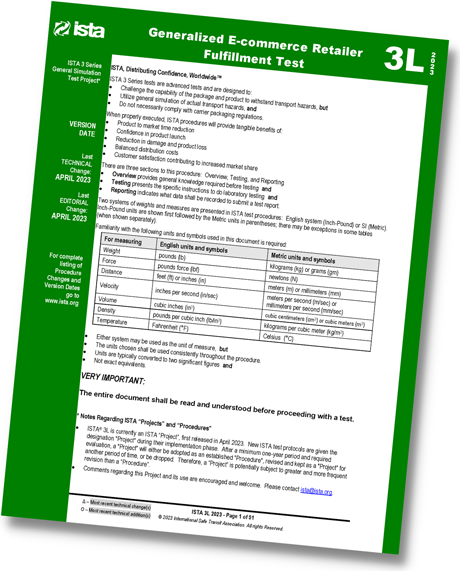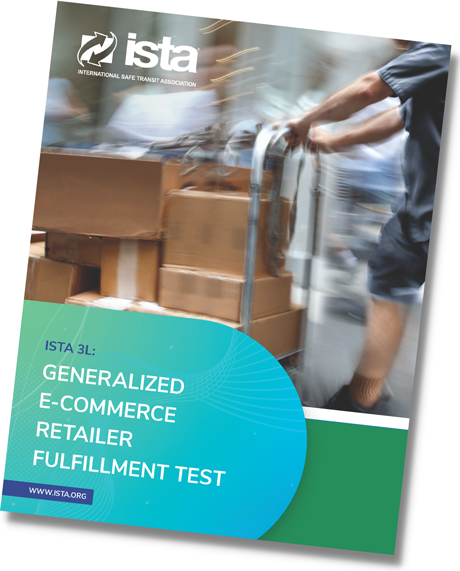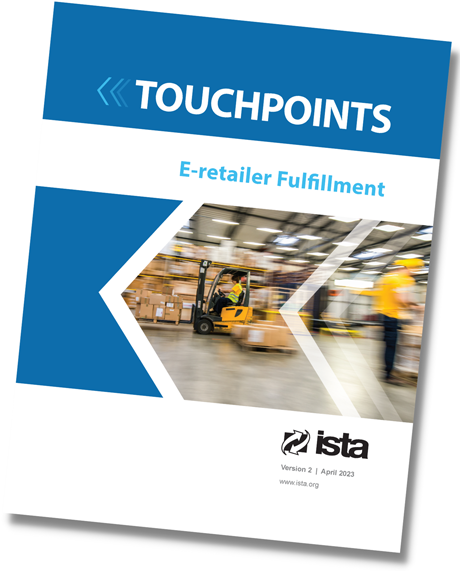
ISTA 3L Generalized E-commerce Retailer Fulfillment Test
A research-based, data-driven testing protocol that simulates the hazards experienced when product orders, fulfilled by retail corporations, are shipped directly to consumers.
We're excited to announce the release of a new testing protocol that will allow companies to simulate the many hazards encountered when product orders are shipped directly to consumers through the e-commerce retailer fulfillment systems employed by companies like Amazon.com, Walmart, Sam’s Club, Costco, The Home Depot and more.
ISTA 3L is a research-based, data-driven testing protocol that simulates the hazards experienced when product orders, fulfilled by retail corporations, are shipped directly to consumers. It allows users to evaluate a packaged product’s capability to withstand the supply chain hazards experienced when transporting and handling packaged-products from receipt into any e-commerce retailer fulfillment operation through to the end consumer.
The new testing protocol, called ISTA 3L, is a generalized e-commerce retailer fulfillment test developed and approved through ISTA’s ANSI accredited standards development process. The development process, led by the ISTA Standards Council, leveraged the combining of data from relevant testing protocols and laboratory results, observational data collected within multiple retailer fulfillment locations and broad industry feedback.
The test provides stakeholders across the supply chain an opportunity to anticipate, design, and prepare for the impacts of transit hazards (vibration, shock, compression, temperature and humidity) on packaged products in direct-to-consumer shipments. This is especially essential for home delivery as damage in transit will ultimately be received by the customer, negatively impacting consumer experience and brand equity. Damage in transit is also a worst-case sustainability outcome since both the product and package become waste.
Helping Businesses Prepare for E-commerce Shipping
"We are witnessing a business paradigm shift towards the digital economy. While some of this shift was accelerated due to the pandemic, it’s also driven by other factors like investment into unified commerce platforms and logistics to support them, the rise in spending power for Generation Z, and increased global access to technology like connected mobile devices."
"This massive shift in the retail supply chain journey means that companies need to do more to ensure a positive experience for the end customer. Product damage during the shipping process ultimately impacts brand perception, sustainability efforts and the bottom line."
"The new ISTA 3L testing protocol will help e-commerce retailers and their partners across the supply chain in understanding and simulating the hazards experienced with shipping products directly to customers. The 3L testing protocol is conducted in a laboratory and tests the package performance during vertical and horizontal compressions, vibrations, and varying height drops."
What is ISTA 3L?
3L specifically focuses on packaged-products being shipped in their own containers (SIOC), through the following phases an e-commerce retailer fulfillment supply chain:
- E-commerce retailer processing, including fulfillment
- Outbound to consumer, either single parcel or less-than-truckload (LTL) shipment methods
Each one of the phases along the supply journey involves additional touch points, and with each touch point comes with the opportunity for packaging fatigue or failure.
This test is appropriate for nine different types of packaged products. The different types of packaged products are determined through the consideration of four criteria:
- Retailer Outbound Shipment Method,
- Retailer Fulfillment Center Handling Method,
- Packaged Product Weight
- Product Category

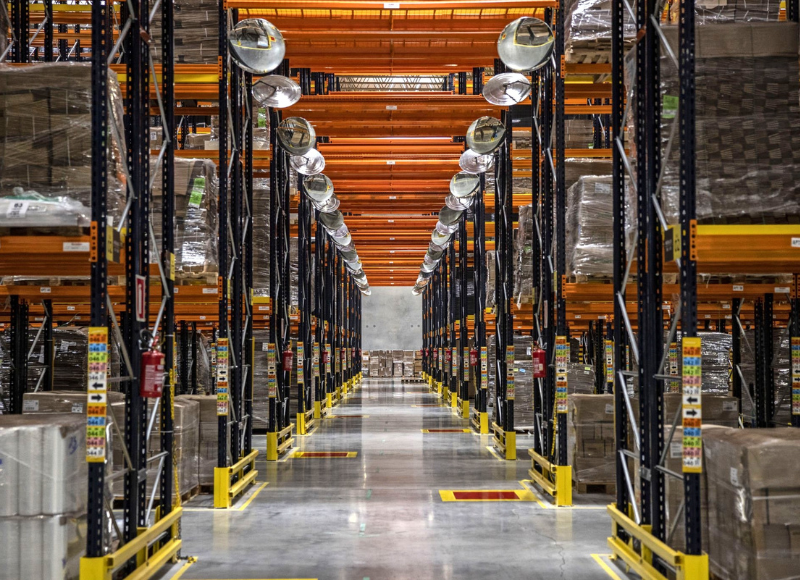
Why Was ISTA 3L Developed?
ISTA 3L was developed with the goal of publishing an industry standard protocol that accounts for the typical supply chain hazards generally found across multiple e-commerce retailers. This enables a foundational understanding of packaged product performance for this market in a general fashion and improves speed to market through a unified retailer approach.
How Was ISTA 3L Developed?
ISTA 3L was developed by combining data from relevant testing protocols, observational data collected within multiple retailer fulfillment locations, broad industry feedback, and correlation of field damages to laboratory testing results.
-
Research was conducted at several e-commerce fulfillment centers of leading e-commerce retailers accounting for nearly half of the market share in the United States. This involved deploying subject matter experts into the field to identify, and through observations, quantify all hazard elements and packaging flows. The collected data was compared against the existing ISTA 6-Amazon.com-SIOC, ISTA 3A, and ISTA 3B test protocols (gap analysis) to serve as a foundation for creating ISTA 3L which accounts for multiple retailers.
-
The ISTA Standards Council reviewed the research and concluded that the hazards found within retailer e-commerce fulfillment operations, as well as the delivery means to the end consumers, are generally similar across retailers and are well suited for standardization. The field study also showed the hazards aligned well with the test elements found within ISTA 6-Amazon.com-SIOC. To further confirm these conclusions, the Council approved the formation of a workgroup to seek broad industry input on the matter.
-
A diverse workgroup of nearly 50 individuals shared their expertise in designing packaging for multiple e-commerce retailers. This included experiences with different field damage types and alternative methods for approaching the challenge of understanding protective performance of a packaged-product system. After much discussion, the workgroup provided its recommendation to the council via a vote. The recommendation was to combine ISTA 3A ‘smalls’ test elements with current elements of ISTA 6-Amazon.com-SIOC, and then conduct a series of correlation testing to prove the viability of the protocol.
-
To validate the proposed test protocol, ISTA’s Standards Council sought out appropriate packaged products to subject to the proposed test. The correlation effort looked at both packaged products experiencing frequent damage and those experiencing minimal damage in the field. The results of the lab testing were then compared to actual field shipment results. This provided a level of confidence that the test was performing appropriately for both products that are experiencing frequent damage issues in the field as well as products that are experiencing limited damage during shipment.
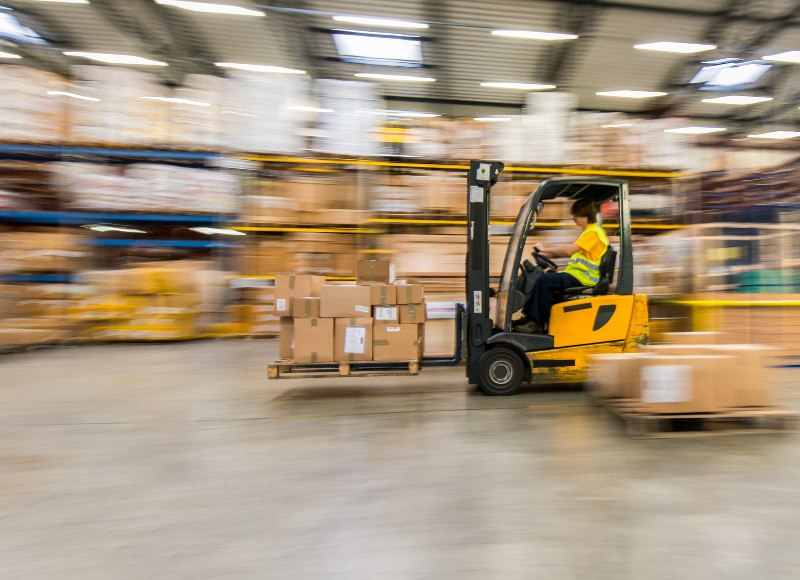
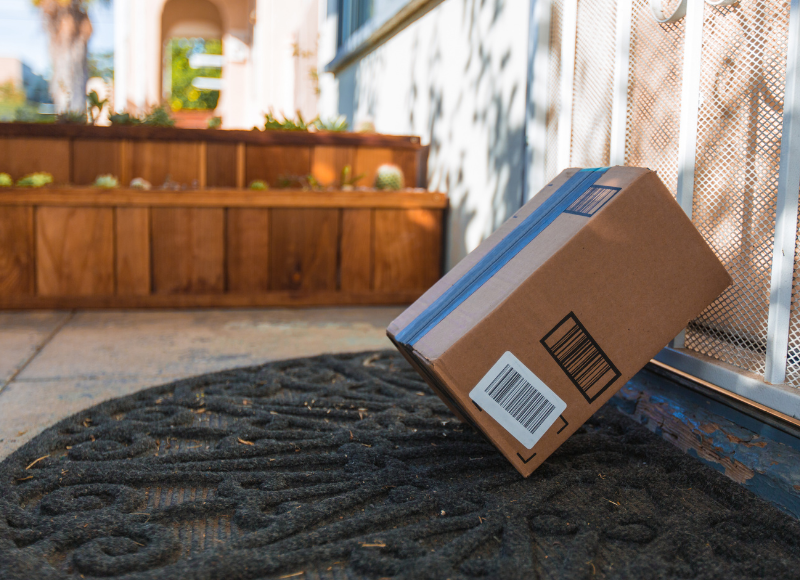
How Is ISTA 3L Different?
From ISTA 3A or ISTA 3B:
ISTA 3L is a generalized E-commerce Retailer Fulfillment test. It accounts for transit hazards experienced in E-commerce retailer fulfillment systems and incorporates test elements from ISTA 3A and ISTA 3B to account for final delivery to consumers where appropriate.
From ISTA 6-Amazon.com-SIOC:
ISTA 3L is non-retailer specific e-commerce Retailer Fulfillment test that accounts for the supply chain hazards generally found across multiple e-commerce retailers. The test is built upon research that was contrasted against existing test elements found within ISTA 6-Amazon.com-SIOC as well as ISTA 3A and 3B.
Where Can I Get ISTA 3L?
ISTA members can download ISTA 3L at no cost. Non-members can purchase a copy of ISTA 3L for $95 USD.
How Do I Find Packaging Design Help?
There are numerous ISTA members that can help you prepare your packaging for e-commerce. You can use the ISTA member search tool to find companies to help you with package design, test equipment, packaging supplies and much more.
